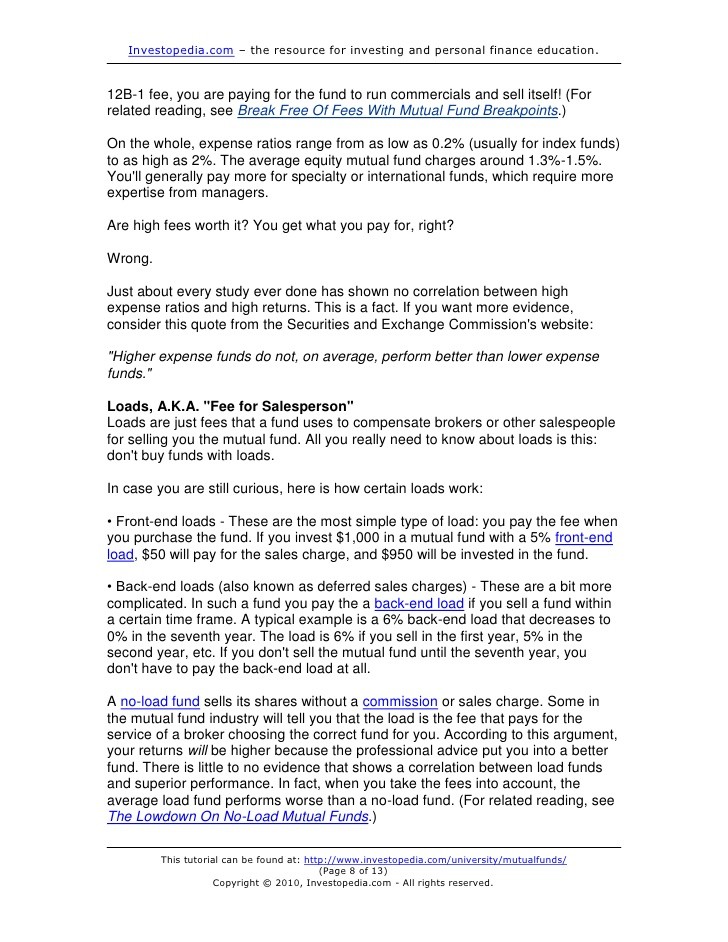Securities commission questions 12b1 fees mutual funds charge investors
Post on: 16 Март, 2015 No Comment

The fees, whose name is a legacy of the Securities and Exchange Commission rule that created them three decades ago, brought in $9.5 billion for fund companies last year. That amount is equal to 18 percent of all fund expenses, not counting sales charges, according to the fund industry’s Investment Company Institute. The 12b-1 fees typically amount to about $2 a year for every $1,000 invested.
The SEC is questioning whether investors should be paying them. Chairman Mary Schapiro has asked her staff to present a recommendation on 12b-1s for the commission to consider this year. Schapiro’s predecessors have studied possible 12b-1 changes, but no overhauls have been done.
Schapiro sounds serious. Investors may have no idea these fees are being deducted, what services they are paying for, or who they are ultimately compensating, she said in a speech last month.
Broadly, the SEC says 12b-1s are supposed to cover fund distribution, and in some cases, shareholder services. These expenses frequently aren’t covered by the sales charges that many funds assess or the management fees all funds charge for overseeing an investment portfolio.
A savvy investor might want to shop around and choose funds that don’t assess 12b-1 fees — about one-third don’t. But before you decide to sidestep those with 12b-1s, be sure you’re not ruling out any funds that are a good fit for your investment needs.
And a fund that doesn’t compensate advisers through a 12b-1 is probably collecting that money elsewhere. Increasingly, 12b-1s have become revenue substitutes for the growing number of funds that don’t charge loads, or sales fees. A fund promoted as no-load might charge you in the form of a 12b-1 or another expense after you buy in.
It doesn’t make sense to use 12b-1s alone as a tool to screen out funds, says Mercer Bullard, president of Fund Democracy, a fund shareholder advocacy group. Bullard is a former assistant chief counsel at the SEC.
The challenge for regulators and the industry is to design a fee system that investors understand and that also fairly compensates advisers and other intermediaries. One purpose of the fee is to help pay brokers, and the disclosure forms are designed to be sure that investors understand that.
Any regulatory changes also could invite new problems. Loren Fox, an analyst with fund researcher Strategic Insight, worries that any requirement that advisers be compensated outside 12b-1s could be less transparent than the current system. Besides compensating brokers, 12b-1s were created to help a then-struggling fund industry recover from tough times in the 1970s. The thinking went like this: 12b-1s could help funds cover marketing and advertising costs to lure back investors. The more assets the funds have, the more efficiently they’ll be run, leading to expense cuts that can benefit all. Eventually, many funds could become big enough that their governing boards would decide to stop charging 12b-1s.
But it often hasn’t worked out that way because of the varied arrangements that fund companies use to compensate brokers selling their funds. Take American Funds, which assesses 12b-1s at its biggest funds. That includes the nation’s largest stock fund, Growth Fund of America, whose biggest share class (AGTHX) charges a 12b-1 fee of 0.24 percent. That’s about one-third of overall expenses at the 36-year-old fund, whose assets total $156 billion.
The fund’s disclosures say the 12b-1 money covers distribution and services, and can include commissions and wholesaler compensation in instances where an investor makes a fund purchase of $1 million or more without an upfront sales charge.














